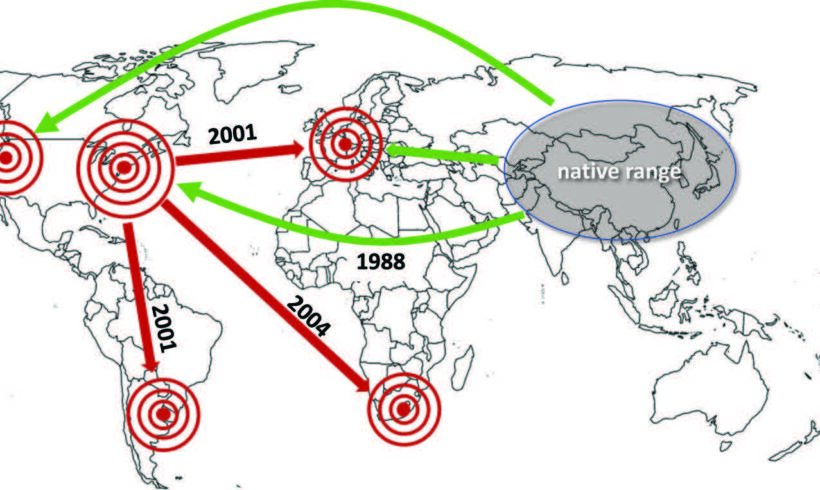This month, we interviewed Dr. Cliff Kraft and Dr. Pete McIntyre of the Adirondack Fishery Research Program who study invasive smallmouth bass in the Adirondacks

New York Invasive Species Research Institute
Archive for tag: ecosystem
Getting to the (Data) Point
Fusco et al. (2023) summarize what spatial invasive plant data is available in the United States and how it can be used.
Researcher Spotlight: Dr. Jacquelyn Gill
This month, we interviewed Dr. Jacquelyn Gill, a paleoecologist whose research from the past 20,000 years can help us road map into the future of plant management in a changing climate.
Embracing change in policy with a changing climate
Bradley et al. (2023) lay out ideas for better integration of invasive species and climate change policies and practices
Researcher Spotlight: Dr. Annette Evans
This month, we interviewed Dr. Annette Evans, a postdoctoral researcher at UMass Amherst/Northeast Climate Adaptation Science Center, whose work combines invasion ecology and climate change to inform land management by modeling abundance and distributions of invasive plants.
Researcher Spotlight: David Wong, Ph.D
NYISRI interviews Dr. David Wong, who seeks better solutions to managing aquatic invasive species, exploring novel tools like detection dogs.
Researcher Spotlight: Dr. Annise Dobson
Dr. Annise Dobson's invasion research is motivated by forest conservation for all, particularly in urban and managed forests.
Researcher Spotlight: Dr. Jessica Rogers
In this researcher spotlight, NYISRI interviews Dr. Jessica Rogers, who works with her student researchers to document and control purple loosestrife in Northern New York.
Global Change & Invasive Species: Priorities for a Path Forward | Research summary
An international team of 19 researchers identify and summarize four critical priority areas to better advance invasion science in an era of rapid global change.
Lessons learned from a widespread invader | Research summary
This paper summarizes current research and knowledge about one of the top invasive species in Europe to help inform management of other invasive species that cover broad ranges and span diverse habitat types.










